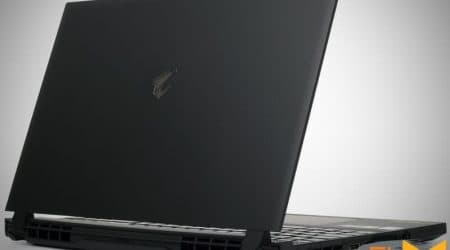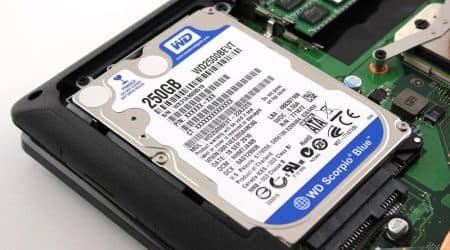


Prevent Router Overheating – Wireless Router Stop Your Router
If you’ve noticed that your router is getting unusually hot, you’re not alone. Overheating is a common problem that many router users face, and it can lead to a variety of issues such as slow internet speeds, frequent disconnections, and even hardware damage. Understanding why your router is overheating and knowing how to fix it can help you avoid these problems and ensure that your internet connection is stable and reliable.
There are several reasons why your router may be overheating. One of the most common reasons is inadequate ventilation. Routers generate heat as they transmit data, and if the heat is not properly dissipated, it can build up and cause the router to overheat. Make sure that your router is placed in a well-ventilated area with plenty of space around it. Avoid placing it in an enclosed cabinet or hiding it behind other objects that can obstruct airflow.
Another common cause of router overheating is overuse. If you have multiple devices connected to your router and they are all using a significant amount of bandwidth, your router may have to work harder to handle the increased traffic. This increased workload can lead to overheating. Consider reducing the number of devices connected to your router or limiting their bandwidth usage to reduce the strain on your router.
In addition to inadequate ventilation and overuse, old or outdated firmware can also contribute to router overheating. Firmware is the software that runs on your router, and outdated firmware can cause the router to work less efficiently, leading to increased heat generation. Check for firmware updates regularly and install them to ensure that your router is running the latest and most stable version of the software.
If you’ve tried the above solutions and your router is still overheating, it may be time to consider purchasing a new router. Older routers may not have the necessary hardware or firmware updates to handle the demands of modern internet usage, leading to excessive heat generation. When shopping for a new router, look for one that is specifically designed to handle high internet speeds and has built-in cooling mechanisms such as internal fans or heat sinks.
Overall, addressing router overheating requires a combination of proper placement, reduced usage, firmware updates, and, if necessary, upgrading to a newer model. By taking these steps, you can ensure that your router stays cool and your internet connection remains strong and stable.
Understanding Router Overheating and How to Resolve It Wireless
Router overheating is a common problem faced by many users, especially those who rely heavily on their internet connectivity. When a router overheats, it can cause various issues such as slow internet speeds, frequent disconnections, or even complete failure of the device. Therefore, it is crucial to understand the causes of router overheating and how to resolve this issue.
There can be several reasons behind router overheating. One of the main causes is inadequate ventilation. Routers generate heat while processing data and transmitting signals. If the device is placed in a closed or confined space, such as a cabinet or under other electronic devices, the heat gets trapped, leading to overheating. Similarly, if the router’s vents are blocked by dust, pet hair, or other debris, it restricts airflow and contributes to overheating.
To resolve router overheating, it is essential to ensure proper ventilation. Firstly, consider moving the router to a well-ventilated area, away from other heat-generating devices. Keep it on a flat surface, preferably elevated to allow proper airflow. Secondly, regularly clean the router’s vents using a small brush or compressed air. This will prevent dust buildup and facilitate better heat dissipation.
Another factor contributing to router overheating is excessive usage. When the router is constantly under heavy load, such as multiple devices streaming HD videos or downloading large files, it works harder, generating more heat. In such cases, it is advisable to prioritize and reduce the number of active connections or limit bandwidth-consuming activities to alleviate the router’s workload.
Updating the router’s firmware is another effective way to address overheating issues. Manufacturers often release firmware updates to optimize performance and address known bugs or vulnerabilities. These updates may also include enhancements to the device’s cooling mechanisms, improving heat management and reducing the risk of overheating.
In some cases, it may be necessary to invest in additional cooling solutions for your router. These can include external fans, heat sinks, or cooling pads designed specifically for routers. These accessories help in dissipating heat more efficiently, ensuring the router operates within safe temperature ranges.
In conclusion, router overheating can cause various problems and disrupt internet connectivity. By understanding the causes and implementing preventive measures like proper ventilation, reducing excessive usage, and updating firmware, you can effectively resolve router overheating issues. If the problem persists despite these efforts, it may be necessary to seek professional assistance or consider replacing the router.
What Causes Router from Overheating
Routers are electronic devices that generate a considerable amount of heat during operation. While some heat is a normal byproduct of their functionality, excessive overheating can cause performance issues and even hardware damage. Several factors can contribute to router overheating, including:
- Poor Ventilation: Inadequate airflow around the router, such as when it is placed in a confined space or covered by objects, can trap heat and increase the temperature.
- Dust and Debris: Accumulated dust and debris can clog the router’s fan or vents, restricting the air passage and causing the device to overheat.
- High Usage: Intensive usage of the router, such as multiple devices connected simultaneously or bandwidth-intensive activities like streaming or gaming, can cause the router to overwork and generate excess heat.
- Outdated Firmware: Outdated firmware may not efficiently manage the router’s resources, leading to increased energy consumption and heat generation.
- Hardware Component Failure: Faulty internal components, such as the fan or heat sink, can result in inadequate cooling, ultimately causing the router to overheat.
To prevent router overheating, it is essential to address these causes. Ensure proper ventilation for the router, keeping it in an open and well-ventilated area. Regularly clean the router to remove dust and debris, paying particular attention to the fan and vents. Limit intensive usage when possible, and consider upgrading to a router with higher specifications if needed. Keep the firmware up to date to benefit from performance improvements and enhanced heat management. Lastly, if the router continues to overheat, it may be necessary to consult a professional or contact the manufacturer for further assistance.
Importance of Maintaining Optimal Router Temperature router is overheating
Router overheating is a common issue that many people overlook, but it can have severe consequences for the performance and lifespan of your device. It is crucial to maintain an optimal temperature for your router to ensure its proper functioning.
Firstly, overheating can significantly affect the speed and stability of your internet connection. When a router overheats, it may start to drop packets and experience signal interference, resulting in slow or unstable internet speeds. This can be frustrating, especially if you rely on a fast and stable connection for work, online gaming, or streaming.
Moreover, high temperatures can also put unnecessary stress on the internal components of your router, leading to a shortened lifespan. Continuous exposure to heat can cause the circuitry to deteriorate, resulting in a higher likelihood of hardware failures. Replacing a router can be costly, so taking preventive measures to maintain the optimal temperature is essential to prolong its lifespan.
It is worth noting that routers are not designed to operate in extreme temperatures. When exposed to excessive heat, they may encounter more frequent software glitches, random reboots, or even permanent damage to the hardware. Therefore, it is vital to keep your router in a well-ventilated area and avoid placing it near heat-generating appliances such as modems, game consoles, or direct sunlight.
To ensure the optimal temperature of your router, regular maintenance is necessary. Start by cleaning the router periodically to remove any dust or debris that may hinder proper ventilation. Additionally, checking that the router’s vents are not blocked and ensuring its fans are working correctly can help dissipate heat effectively.
In conclusion, maintaining an optimal temperature for your router is of utmost importance to ensure smooth and reliable internet connectivity and prolong its lifespan. By following simple maintenance practices and avoiding excessive heat exposure, you can prevent overheating issues and enjoy a faster and more stable internet experience.
Signs Router to Overheat
An overheating router can lead to poor network performance and even complete failure. It is important to be aware of the signs of an overheating router so that you can take appropriate action to prevent damage and maintain optimal performance.
Here are some common signs that may indicate that your router is overheating:
| 1. Unusual heat: If you notice that your router feels abnormally hot to the touch, it may be a sign of overheating. Routers generate heat during normal operation, but if it feels significantly hotter than usual, it could indicate a problem. |
| 2. Frequent disconnections: Overheating can cause your router to randomly disconnect from the network. If you find yourself experiencing frequent disconnections, especially when the router feels hot, it could indicate an overheating issue. |
| 3. Slow internet speeds: When a router overheats, it can struggle to keep up with network demands, resulting in slower internet speeds. If you notice a significant decrease in your internet speed, it could be a sign of an overheating router. |
| 4. Router restarts: An overheating router may automatically restart itself as a protective measure. If you notice that your router frequently restarts on its own, especially when it feels hot, it could be due to overheating. |
If you observe any of these signs, it is important to take action to prevent further damage. You can try the following steps:
- Cool down the router: Turn off the router and let it cool down for a while. Ensure that it is placed in a well-ventilated area.
- Clean the router: Dust and debris can accumulate on the router vents, restricting airflow and contributing to overheating. Use a can of compressed air to gently clean the vents.
- Check the router location: Ensure that the router is not placed near heat sources, such as direct sunlight, radiators, or other appliances that generate heat.
- Consider additional cooling options: If the above steps do not resolve the overheating issue, you may need to invest in additional cooling options, such as a cooling pad or fan, to help regulate the temperature of the router.
By being aware of the signs of an overheating router and taking appropriate steps to prevent and address the issue, you can ensure that your router operates efficiently and avoids potential damage.
Tips for Preventing Router Overheating
Router overheating can be a common problem that many people face. To ensure that your router stays cool and functions properly, here are some tips you can follow:
| 1. Proper Ventilation | Make sure that your router is placed in a well-ventilated area. Avoid keeping it in enclosed spaces or near other heat sources such as modems or electronic devices. |
| 2. Clean the Router Regularly | Dust and debris can accumulate on your router, blocking the airflow and causing it to overheat. Clean it regularly using a soft brush or compressed air to remove any dirt that may have built up. |
| 3. Keep Firmware Up to Date | Router manufacturers often release firmware updates that can improve the performance and stability of your device. Make sure to check for updates regularly and install them to prevent any potential issues, including overheating. |
| 4. Use a Cooling Pad or Fan | If you notice that your router is still heating up, even with proper ventilation, consider using a cooling pad or fan to provide extra airflow and keep the temperature down. |
| 5. Reduce the Number of Connected Devices | Having too many devices connected to your router can put a strain on it and lead to overheating. If possible, try to reduce the number of connected devices or use a wired connection for devices that require a stable connection. |
| 6. Restart Your Router Regularly | Restarting your router can help to clear out any temporary files or processes that may be causing it to overheat. Consider restarting it at least once a week to keep it running smoothly. |
By following these tips, you can help prevent your router from overheating and ensure that it continues to function properly for a longer period of time.
Cleaning and Dusting Your Router to Avoid Overheating
If you notice that your router is constantly overheating, it may be time to clean and dust it. Dust and dirt can accumulate on the router’s internal components and obstruct the airflow, causing it to overheat. By regularly cleaning your router, you can prevent overheating and extend its lifespan.
Here are some steps to help you clean and dust your router:
- Start by unplugging your router from the power source to ensure your safety.
- Use a can of compressed air to blow away the dust and dirt from the router’s exterior. Pay special attention to the ventilation holes and fan area.
- Use a soft, dry cloth to wipe away any remaining dust on the surface of the router.
- If you notice that the dust is stubborn, you can dampen the cloth slightly with water or isopropyl alcohol. Make sure the cloth is not dripping wet and avoid using any cleaning solutions that may damage the router.
- Open the router’s casing if possible, following the manufacturer’s instructions. Be cautious and gentle to avoid damaging any internal components.
- Again, use compressed air to blow away the dust inside the router. Pay close attention to the fan, heat sinks, and other areas where dust tends to accumulate.
- If there are any stubborn dust particles or grime, you can use a soft brush or cotton swabs lightly dampened with isopropyl alcohol to clean them. Do not apply excessive pressure or moisture to prevent damage.
- Carefully put back the router casing and ensure it is securely fastened.
- Plug the router back into the power source and turn it on.
By regularly cleaning and dusting your router, you can maintain its performance and prevent overheating issues. Remember to keep it in a well-ventilated area, away from direct sunlight or heat sources, to further minimize the risk of overheating. If the problem persists, consider contacting your router’s manufacturer for further assistance.
Improving Airflow around Your Router
One of the main reasons why routers overheat is due to poor airflow. Over time, dust and debris can accumulate around the router, blocking the vents and preventing air from circulating properly. This can lead to the router overheating and potential failure.
To improve the airflow around your router, you can follow these steps:
1. Keep the Area Clean
Make sure the area around your router is clean and free from dust and debris. Regularly dust off the router and vacuum any dust or dirt that may have accumulated. This will help prevent the vents from getting clogged and allow air to flow freely.
2. Maintain Proper Ventilation
Ensure that your router has enough space for proper ventilation. Avoid placing it in enclosed spaces, such as cabinets or closets, where air circulation is limited. Instead, place the router in an open area with good airflow.
3. Elevate the Router
Elevating the router off the ground can also help improve airflow. You can use a shelf or a wall mount to keep it elevated. This allows air to circulate underneath the router and helps dissipate heat more effectively.
4. Use a Cooling Pad or Fan
If your router tends to heat up even with improved airflow, you can consider using a cooling pad or a fan. These accessories help cool down the router by increasing the airflow around it. Make sure to choose a cooling option that is compatible with your router’s size and model.
By improving the airflow around your router, you can decrease the risk of overheating and prolong its lifespan. These simple steps can help maintain the router’s performance and ensure a stable internet connection for your devices.
Considerations for Router Placement
Proper router placement is crucial to preventing overheating and ensuring optimal router performance. Here are some important considerations to keep in mind:
1. Ventilation
Ensure that your router is placed in a well-ventilated area. Avoid enclosing it in a tight space or placing it in a cabinet without proper airflow. Good ventilation helps dissipate heat and prevents the router from overheating.
2. Avoid Heat Sources
Keep your router away from heat sources such as radiators, direct sunlight, or other electronic devices that generate heat. Excessive heat can contribute to overheating issues and reduce the lifespan of your router.
3. Avoid Obstructions
Avoid placing the router behind large objects or in areas with thick walls or other obstructions. These can interfere with the router’s signal and cause it to work harder, increasing the chances of overheating. A clear line of sight between devices and the router is ideal for better performance.
4. Elevation
Try to elevate the router off the ground or floor. Mounting it on a wall or placing it on a shelf can help improve airflow and prevent dust accumulation, both of which can contribute to overheating.
5. Regular Maintenance
Perform regular maintenance by cleaning the router and its vents to remove dust and debris. Over time, these particles can build up and block airflow, causing the router to overheat. Use a soft brush or compressed air to clean the router and ensure proper ventilation.
By considering these factors when placing your router, you can avoid overheating issues and ensure that it operates at its best performance. Remember to periodically check the router’s temperature and take appropriate action if it feels excessively hot.
Assessing the Need for Router Updates and Upgrades
Regularly assessing the need for router updates and upgrades is essential to ensure optimal performance and prevent issues like overheating. As technology advances and network demands increase, routers need to be able to keep up with the latest standards and handle higher capacities.
1. Check for Firmware Updates
One of the first steps in assessing the need for router updates is to check for firmware updates. Firmware is the software that runs on your router, and manufacturers often release updates to fix bugs, improve security, and add new features. Checking for firmware updates should be done regularly, and if there are any available updates, it is recommended to install them.
2. Evaluate Router Specifications
As technology evolves, so do the specifications of routers. Evaluate your current router’s specifications and compare them to newer models on the market. Factors to consider include the supported Wi-Fi standards (e.g., 802.11ac, 802.11ax), the maximum data transfer rate, and the number of available Ethernet ports. If your router is outdated and cannot support the needs of your network, it may be time to consider an upgrade.
3. Determine Network Requirements
Take the time to assess your network requirements and identify any potential areas where your current router may be lacking. For instance, if you have a large number of devices connected to your network, a router with multiple antennas and enhanced signal strength may be necessary. Understanding your network’s needs will help determine if a router upgrade is necessary.
4. Consider New Features
Newer routers often come with additional features and technologies that can improve your network experience. Consider if any of these features would be beneficial to your network. Some examples include advanced parental controls, built-in VPN support, or compatibility with smart home devices. If these features are important to you, upgrading your router may be worth considering.
5. Seek Professional Advice
If you’re unsure whether your router needs an update or upgrade, consider seeking professional advice. A network technician or IT professional can assess your current setup and provide guidance on whether a router upgrade is necessary. They can also recommend specific router models that align with your network requirements.
Regularly assessing the need for router updates and upgrades is crucial for maintaining a reliable and efficient network. By staying up to date with firmware updates, evaluating router specifications, considering network requirements, and seeking professional advice when needed, you can ensure that your router remains capable of meeting your network’s demands and avoid issues like overheating.
FAQ: Router overheating
Why does my router get hot?
Your router may be getting hot due to a buildup of dust and dirt, inadequate ventilation, or excessive use and strain on the device.
How can I tell if my router is overheating?
Signs that your router may be overheating include frequent connection drops, slow or inconsistent internet speeds, and the router becoming noticeably hot to the touch.
What can I do to prevent my router from overheating?
To prevent your router from overheating, you can ensure that it is placed in a well-ventilated area, clean the device regularly to remove dust and debris, and avoid overloading the router with too many connected devices or heavy usage.
Is it safe to use a fan to cool down my router?
Using a fan to cool down your router can be a helpful temporary solution, but it is important to ensure that the fan does not blow directly onto the router or cause any damage to the device.
If my router keeps overheating, what should I do?
If your router keeps overheating despite taking preventive measures, it may be a sign of a larger issue. In this case, it is best to contact your router manufacturer or consult a professional for further assistance.
Why does my router overheat?
Your router may overheat due to several reasons. One common reason is inadequate ventilation, where the router is placed in a confined space with poor airflow. Another reason could be excessive usage, such as when multiple devices are connected to the router and using a lot of bandwidth simultaneously. Lastly, a faulty router or outdated firmware could also contribute to overheating.
How can I fix my router from overheating?
To fix your router from overheating, there are a few steps you can take. First, ensure that your router is placed in a well-ventilated area with sufficient airflow. Avoid placing it in an enclosed space or on top of other electronic devices. Additionally, you can try using a cooling pad or a small fan to improve air circulation around the router. If the issue persists, you may want to consider updating the firmware of your router or contacting the manufacturer for further assistance.





